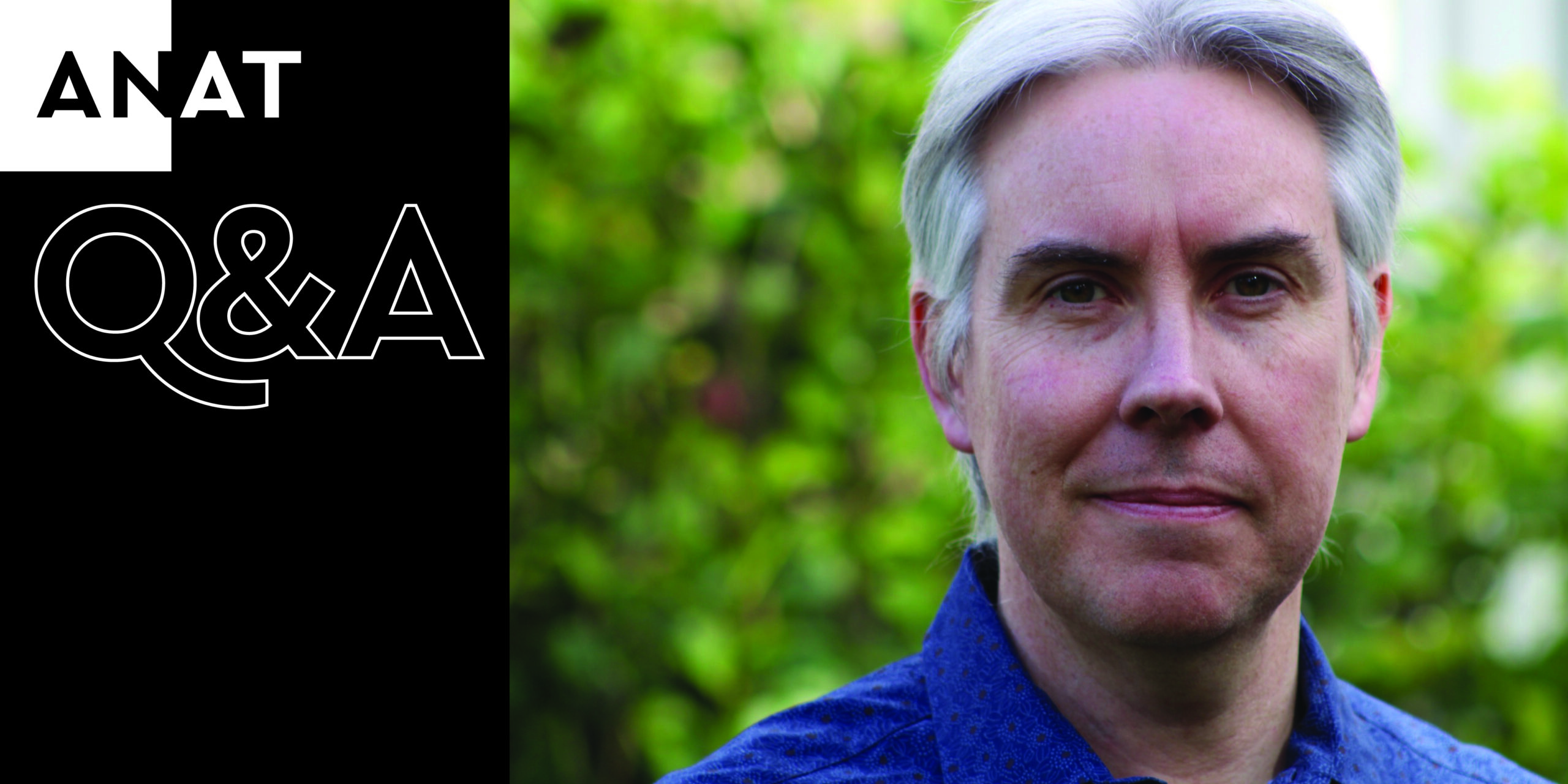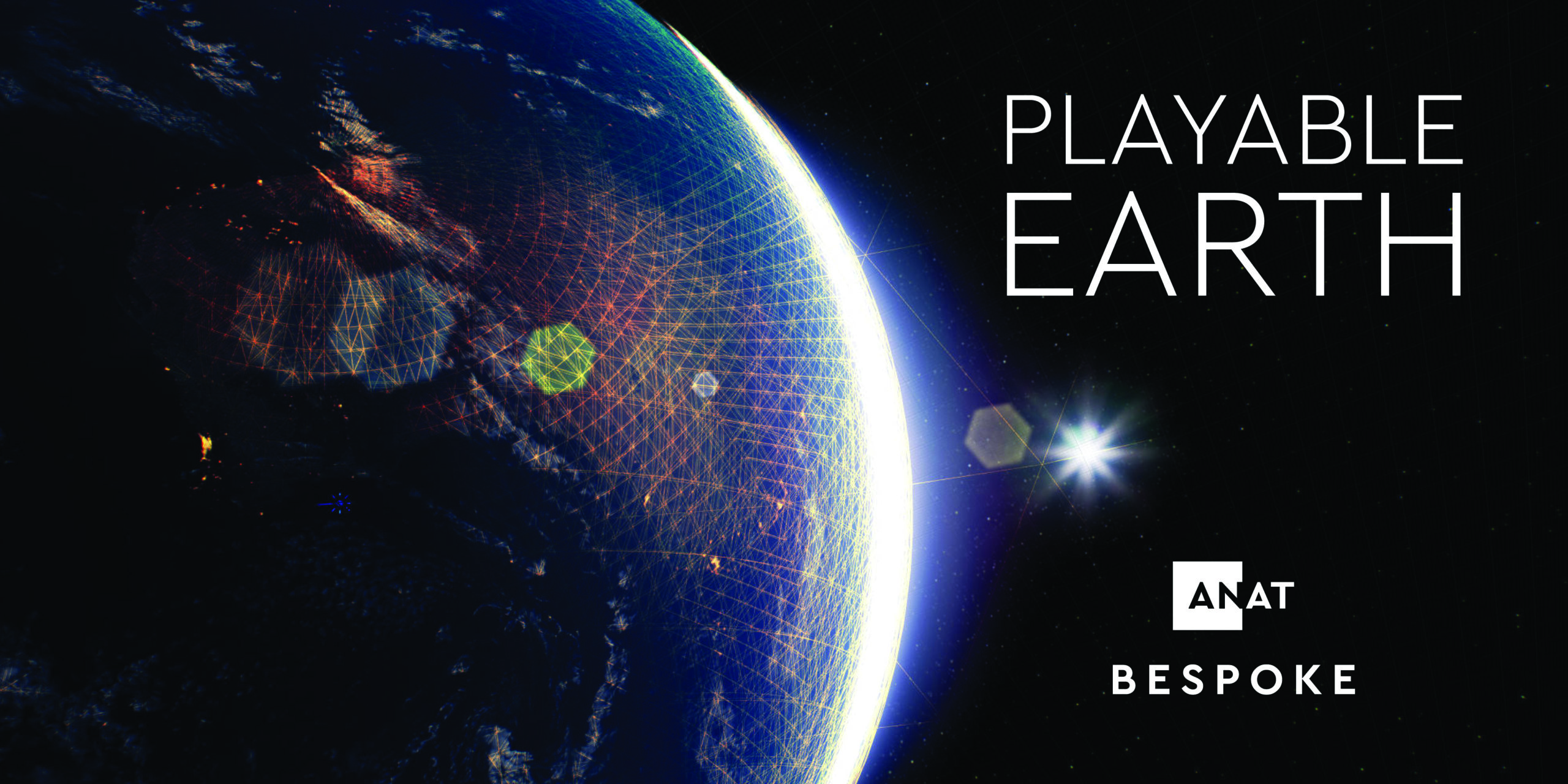Q&A July
A monthly Digest feature where we ask questions about the nature of creative collaborative practice, the stories artists tell and ANAT’s place within the art + science + technology network.

Professor Christopher Fluke
Christopher Fluke
Professor Christopher Fluke is the SmartSat Professorial Chair in space system real-time data fusion, integration, and cognition at Swinburne University of Technology. Chris holds an academic position with Swinburne’s Centre for Astrophysics and Supercomputing and was the foundation Director of Swinburne’s Advanced Visualisation Laboratory (Digital Capability Research Platform). His primary research interests are in the use of advanced visualisation (hardware and software) to accelerate discovery in data-driven contexts. Supported by strong transdisciplinary collaborations, his current work considers the potential for new visualisation methods, and human-machine teaming, to enhance data-intensive real-time decision-making in astronomy, defence, public health and a range of space-related contexts. Chris was a member of the ANAT Board from 2017-2023, and has collaborated with a range of experimental artists, including sound designers, choreographers, performance artists, and digital creators.

Swinburne Discovery Wall-Data Visualisation.
Can you tell us about your connections to ANAT?
My first introduction to the amazing work of ANAT occurred nearly 20 years ago. ANAT generously provided support for what was ultimately an unsuccessful Australian Research Council Linkage application to investigate multi-sensory data exploration in partnership with Company in Space. Shortly afterwards, I was presented with my first opportunity to host David O’Donovan as an Artist in Residence in the inaugural round of the Synapse program (2004). Several Residencies later, I was invited to join the ANAT Board in 2017, where I have had the privilege of watching ANAT continue to grow and flourish – including the delivery of two ANAT SPECTRA festivals (2018 and 2022). During the last six months, I’ve been collaborating with Dr Peter Morse through an ANAT Bespoke Residency for our project Playable Earth.

Peter Morse, rendered in Unreal Engine Post-production: various source data: various Cesium, Mapbox, OpenStreetMap
Everybody’s a storyteller. What stories are you telling through your work?
I’m interested in exploring how novel data visualisation techniques can make complex datasets manageable and usable by different types of audiences. I have spent much of my research career at Swinburne University developing data visualisation solutions for next-generation astronomy projects. More recently, I have turned my attention to challenges in Earth Observation and Space Situational Awareness – which is all about how we monitor and track satellites and orbital debris. As a Professorial Chair with the SmartSat Cooperative Research Centre, I am helping to grow Australian capability in space-related technologies. A critical part of that is working with younger researchers. That includes encouraging them to think about the benefits that arise when artists and scientists collaborate, innovate, and problem-solve together.

Playable Earth demonstration.
How has your practice changed over time?
Over time, I have become increasingly transdisciplinary in my approach to all my research activities. To solve problems in the realms of astronomy and space, I work with researchers from fields as diverse as sports and skilled performance, aviation, computer vision, and design. As much of my work is based on the use of emerging digital technologies, collaboration with artists is a critical ingredient. The freedom to speculate, to question, and to play generates new ideas and pathways that I don’t think I would have reached using more traditional research approaches.
With my earliest experiences supporting Art/Science residencies, I saw my role as a host. My contribution was to provide an environment for the artist to be creative in, but I had no expectations that my own research would benefit. That’s one of the most obvious changes in my own Arts/Science practice – I am now relying on the artist to help show me what might be possible, and together we can encourage and challenge each other to come up with even better solutions.

Dr Peter Morse and Associate Professor Brett Carter (RMIT) using Augmented Reality
What are you working on at the moment?
So many different things! With Dr Peter Morse, I am putting the finishing touches to the first phase of our Playable Earth project. We’ve had far too much fun for it to be considered work while exploring the use of game engines as environments for visualising Earth Observation datasets obtained from satellites. Along the way, we’ve taken detours into Extended Reality (XR), the Omniverse, and the new world of artificial intelligence via large language models. Early in Peter’s residency, we realised that ChatGPT was taking on a role as the third member of our team. We’re now looking to build on Peter’s exploratory, creative work to design AI agents that can assist with data analysis in the field – putting Earth Observation data into your hands via mobile XR displays.
In other research and development projects, I am collaborating with Associate Professor Brett Carter (RMIT) and industry partner CGI to explore new methods for actively tracking satellites so that we can improve safety in the orbital zones around the Earth. With colleagues from Swinburne, industry AI experts Max Kelsen, and the Peter MacCallum Cancer Research Centre, we’re working to enhance patient outcomes through smart use of data and novel diagnostic tools.
Eye Tracking with Student and Discovery Wall
What advice would you give to your younger self? (when you were just starting out as an artist)
Don’t take your research quite so seriously! Not everyone is going to make paradigm-changing discoveries and that is okay. What is more important is to find good people to work with who inspire you to be creative, even if that means moving beyond your own research comfort zone. There is a lot you can learn from — and incorporate in your approaches to problem-solving and discovery — by looking outside of your own discipline.